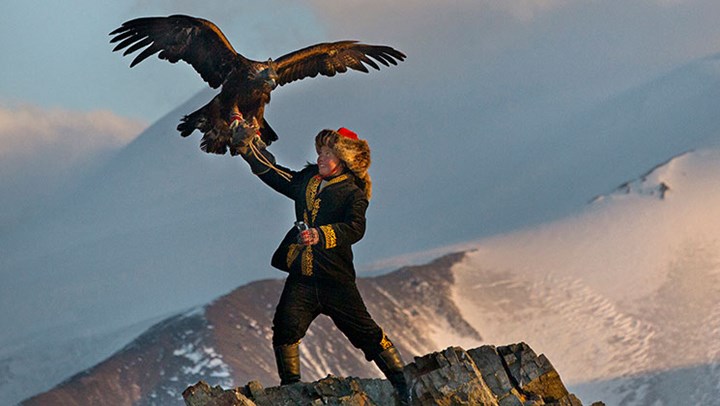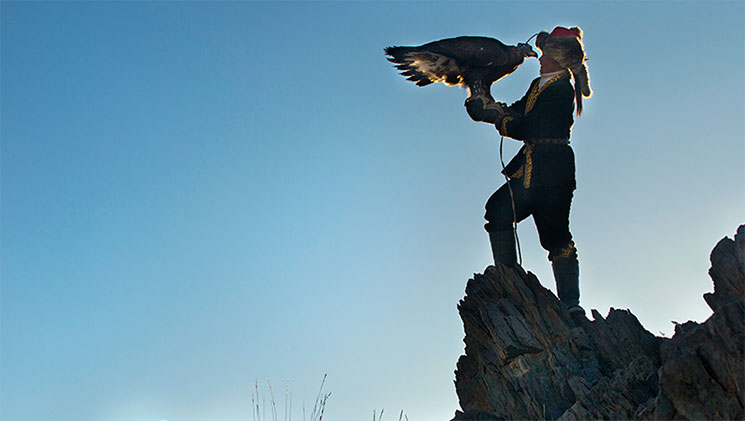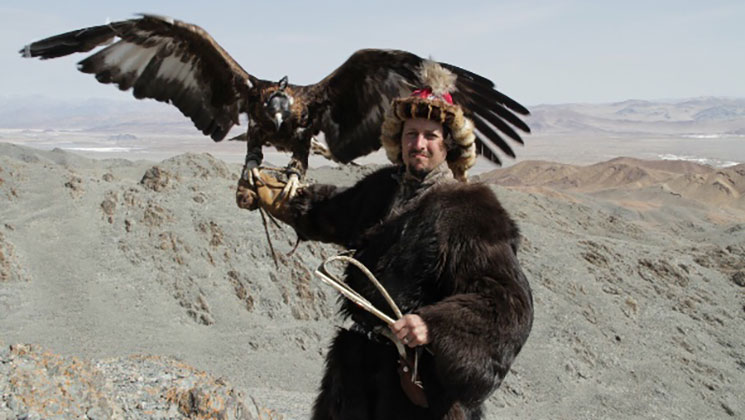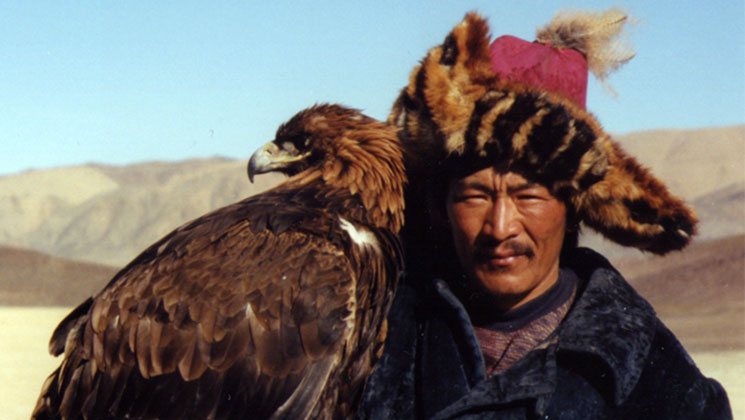
by James A. Swan, Ph.D. - Thursday, May 10, 2018

In this Information Age, the stories told on TV and in feature films can have a powerful influence on people’s attitudes and behavior—including telling the true story of who hunters are and why hunting is central to human nature.
In earlier times films such “Davy Crocket”, “Jeremiah Johnson,” “In the Blood” and “The Ghost and the Darkness” were the leading films of the day showcasing hunters as heroes. Mainstream films portraying hunters as heroes today are rare, with the exception of Jennifer Lawrence, who broke into stardom hunting squirrels in “Winter’s Bone” and then in “The Hunger Games” as the hunter-archer character “Katnis Everdeen.”
Then in 2016 a documentary film from SONY Pictures about hunting titled, “The Eagle Huntress,” was screened at the Sundance Film Festival. The audience gave it a standing ovation. Set in Mongolia, the 87-minute feature-length program follows a 13-year-old Mongolian girl, Aisholpan Nurgaiv, as she trains to become the first female in 12 generations of her family to become an eagle hunter (someone who hunts with an eagle) and then become the first girl to compete in a national eagle hunters’ contest. Since the documentary’s release, it has received rave reviews in the New York Times, the Wall Street Journal, NPR and Variety.

The film follows Nurgaiv’s quest, beginning with her and her father catching and training her own golden eagle, and then covering her competition against 70 men where she wins first place. Considering that golden eagles weigh up to 15 pounds and stand 3 feet tall, showcasing her physical ability to work with the eagle is a powerful story in itself. The film culminates with her eagle catching and killing a fox, which becomes part of the family’s winter clothing.
An inspiring rite-of-passage story, “The Eagle Huntress” is narrated by Daisy Ridley, the co-lead in "Star Wars: The Force Awakens." It is produced by Morgan Spurlock, who produced the fast-food expose’ “Super Size Me” and the “I Caveman” TV series. It went on to win multiple awards and grossed $3 million at the box office—truly incredible for a documentary. Available on Netflix, the film is something for the entire family.
The Place of Falconry in Hunting
Hunting requires tools. Archery equipment has been used by hunters for at least 50,000 years while the earliest known firearms date back to mid-10th-century China. Falconry is merely hunting with a different tool.
The powerful interspecies relationship known as falconry originated in Egypt, Turkey, Kazakhastan and Mongolia and dates back to at least 3000 BC. Most people know that falconers use predator birds—hawks, falcons, eagles and owls—to catch other birds. However, the right birds also are used for catching fish, small animals and mammals as large as deer and wolves when two to three birds are used.
After Mongolia, Kazakhstan and Kirgizstan became non-Communist in the 1990s, these countries sought to revive their traditions. The annual Golden Eagle Festival is held in Olgii, located in western Mongolia, every year.
Two More Films about Falconry in Mongolia
“The Eagle Huntress” joins two other outstanding films in which Americans travel to Mongolia to learn the ancient ways of hunting with eagles.


Editor’s Note: Author James Swan, Ph.D., is the co-executive producer of the “Wild Justice” TV series on the “National Geographic Channel.” Launched in 2010, the cameras follow California game wardens on patrol in the state’s wilderness areas. To read more NRAHLF.org articles by Swan, please check out the following links:
• "Game Wardens Putting Their Lives on the Line"
• "The Psychology of Hunting"
• "Meth Labs in my Hunting Area?"
• "Canis Stew: Issues Surrounding Wolves and Coyotes"
E-mail your comments/questions about this site to:
[email protected]
